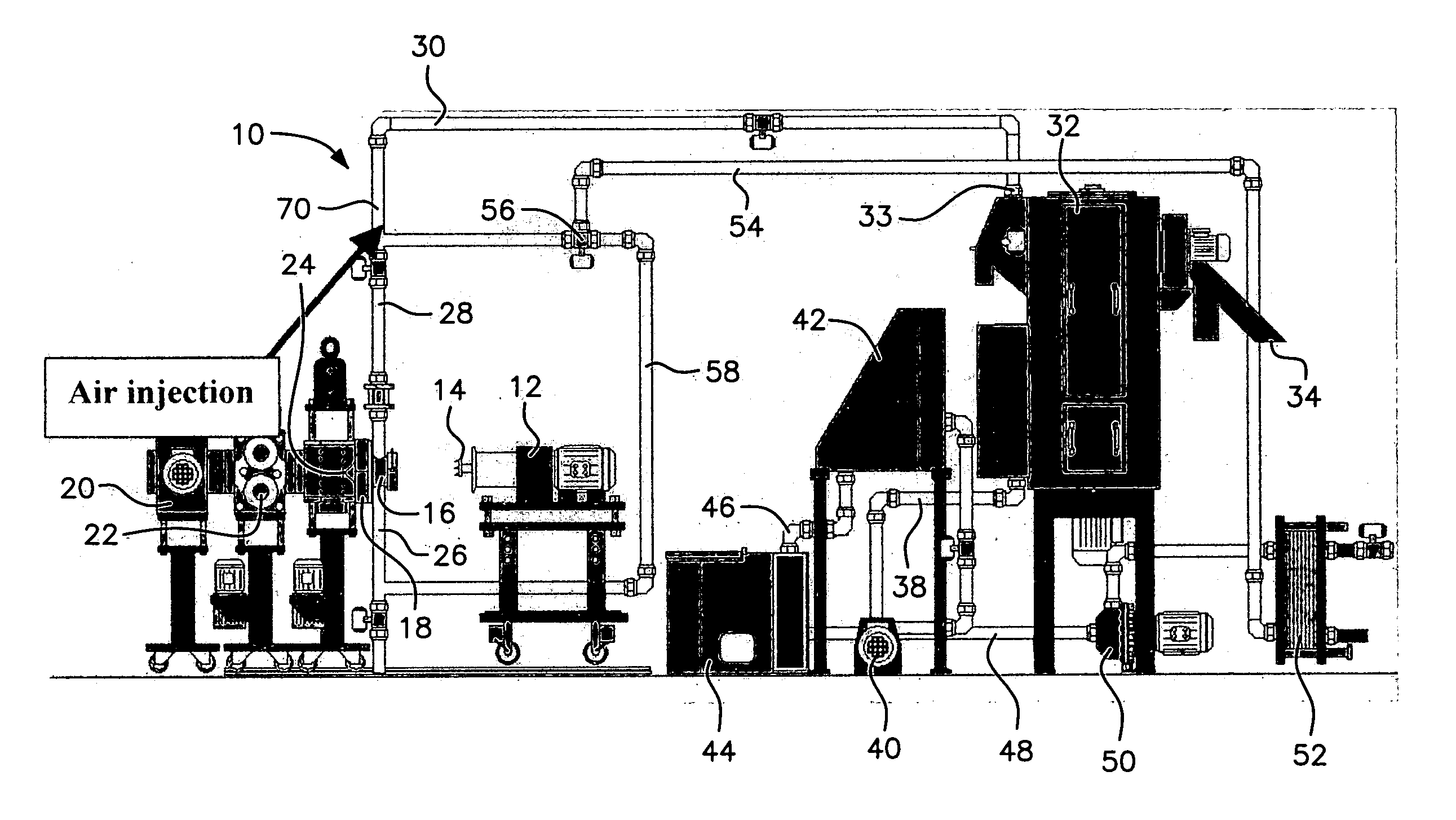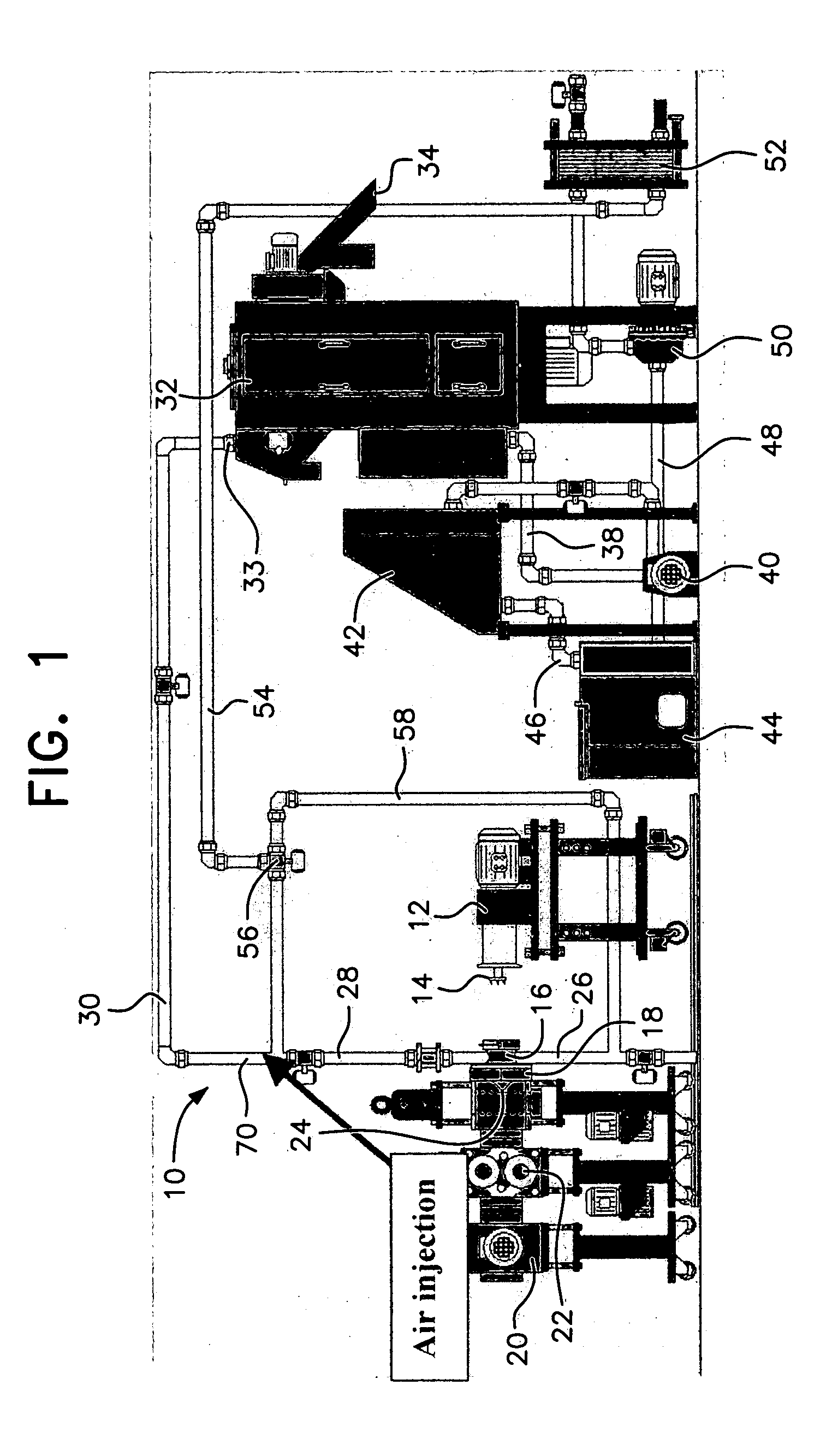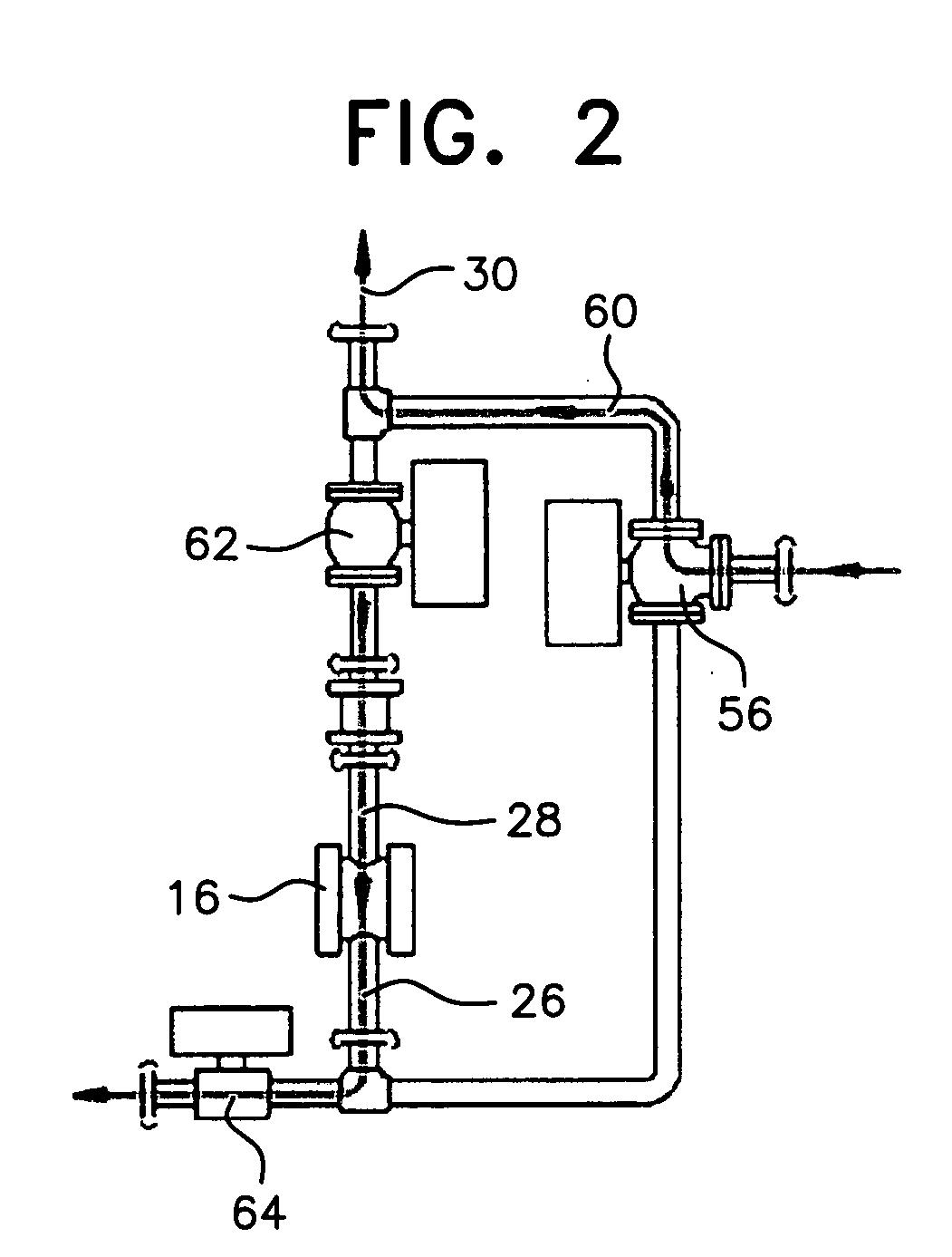Method and apparatus for making crystalline PET pellets
a technology of crystalline pet pellets and equipment, which is applied in the direction of filament/thread forming, drying solid materials, drying machines, etc., can solve the problems of increasing the temperature of the pellet, the distance between the pelletizer and the dryer unit, and the insufficient help to increase the pellet temperature. , to achieve the effect of reducing the residence time of the pellets and lowering the heat condition
- Summary
- Abstract
- Description
- Claims
- Application Information
AI Technical Summary
Benefits of technology
Problems solved by technology
Method used
Image
Examples
trial examples
[0032] Molten PET polymer was continuous extruded into an overall underwater pelletizing system as illustrated in FIG. 1, using a Gala Underwater Pelletizer Model No. A5 PAC 6 and a Gala Model 12.2 ECLN BF Centrifugal Dryer, in the arrangement shown in FIG. 3. The melt temperature was about 265° C. and the cutter blade speed in pelletizer 102 was varied between 2500 and 4500 RPM. The die plate was typical for PET polymers and a typical 3.5 mm die plate with elongated lands was used. The melt velocity through the die holes during the trials was constant at 40 kg / hole / hr.
[0033] The pipe for slurry line 116 was a standard 1.5 inch pipe and its length was 4.5 meters. The speed of centrifugal dryer 108 was kept constant during the trials, and the countercurrent air flow through the dryer 108 was also kept constant during the trials.
[0034] The air injection flow rate to nozzle or valve 118 was varied from 0 to a maximum of 100 m3 / hour, as indicated in Table 1 below, and the water flow a...
PUM
| Property | Measurement | Unit |
|---|---|---|
| Temperature | aaaaa | aaaaa |
| Temperature | aaaaa | aaaaa |
| Angle | aaaaa | aaaaa |
Abstract
Description
Claims
Application Information
 Login to View More
Login to View More - R&D
- Intellectual Property
- Life Sciences
- Materials
- Tech Scout
- Unparalleled Data Quality
- Higher Quality Content
- 60% Fewer Hallucinations
Browse by: Latest US Patents, China's latest patents, Technical Efficacy Thesaurus, Application Domain, Technology Topic, Popular Technical Reports.
© 2025 PatSnap. All rights reserved.Legal|Privacy policy|Modern Slavery Act Transparency Statement|Sitemap|About US| Contact US: help@patsnap.com



